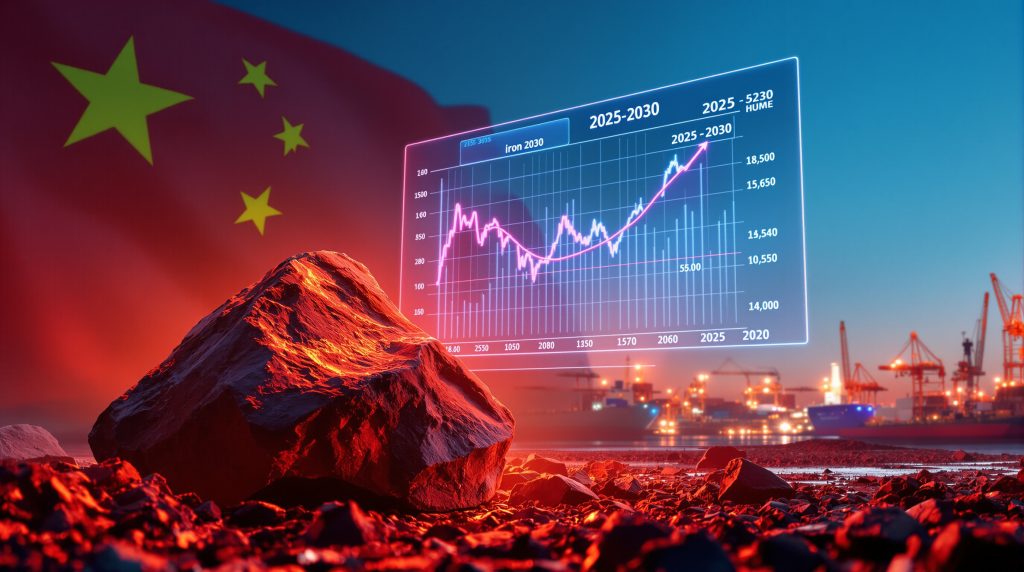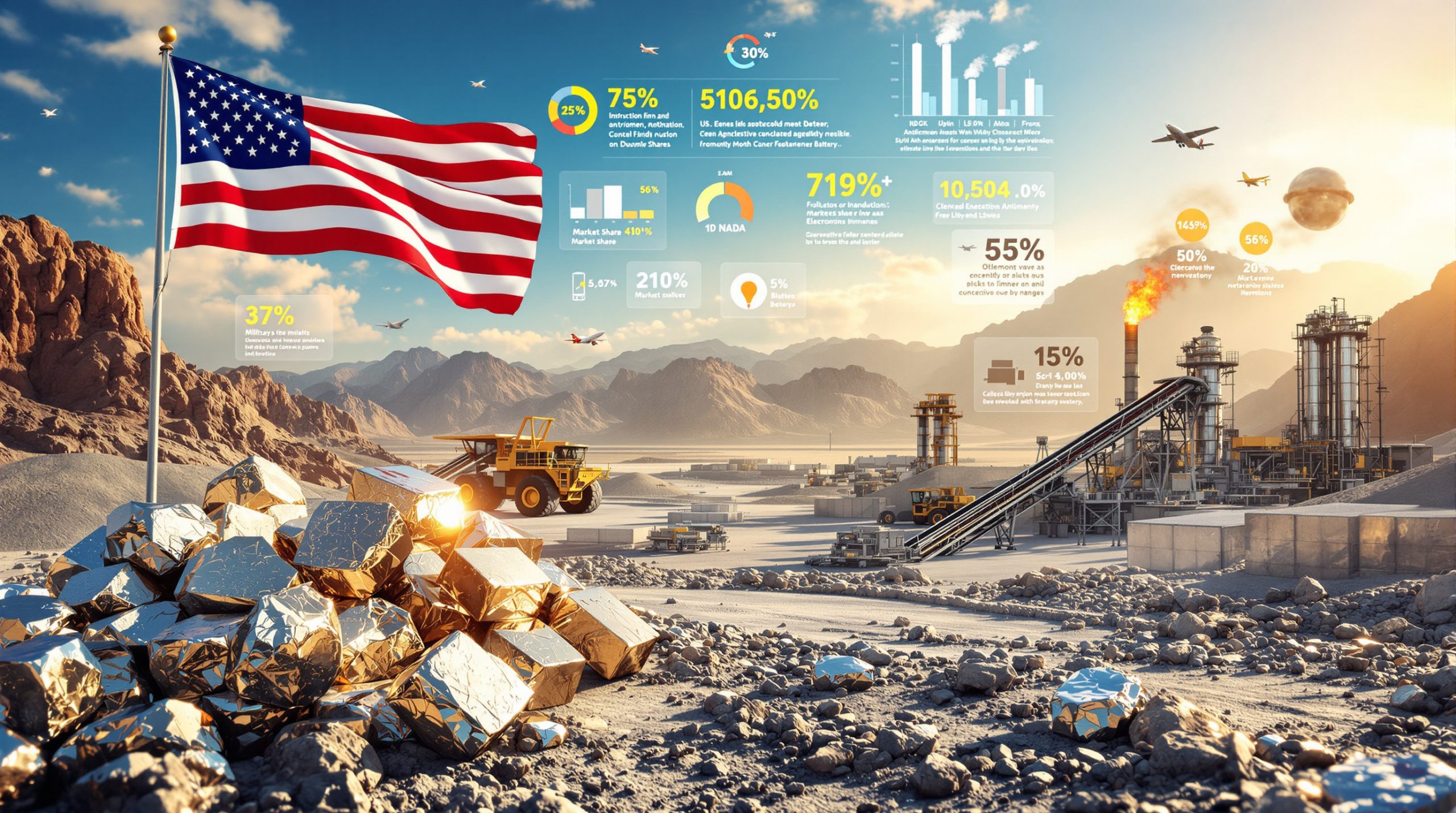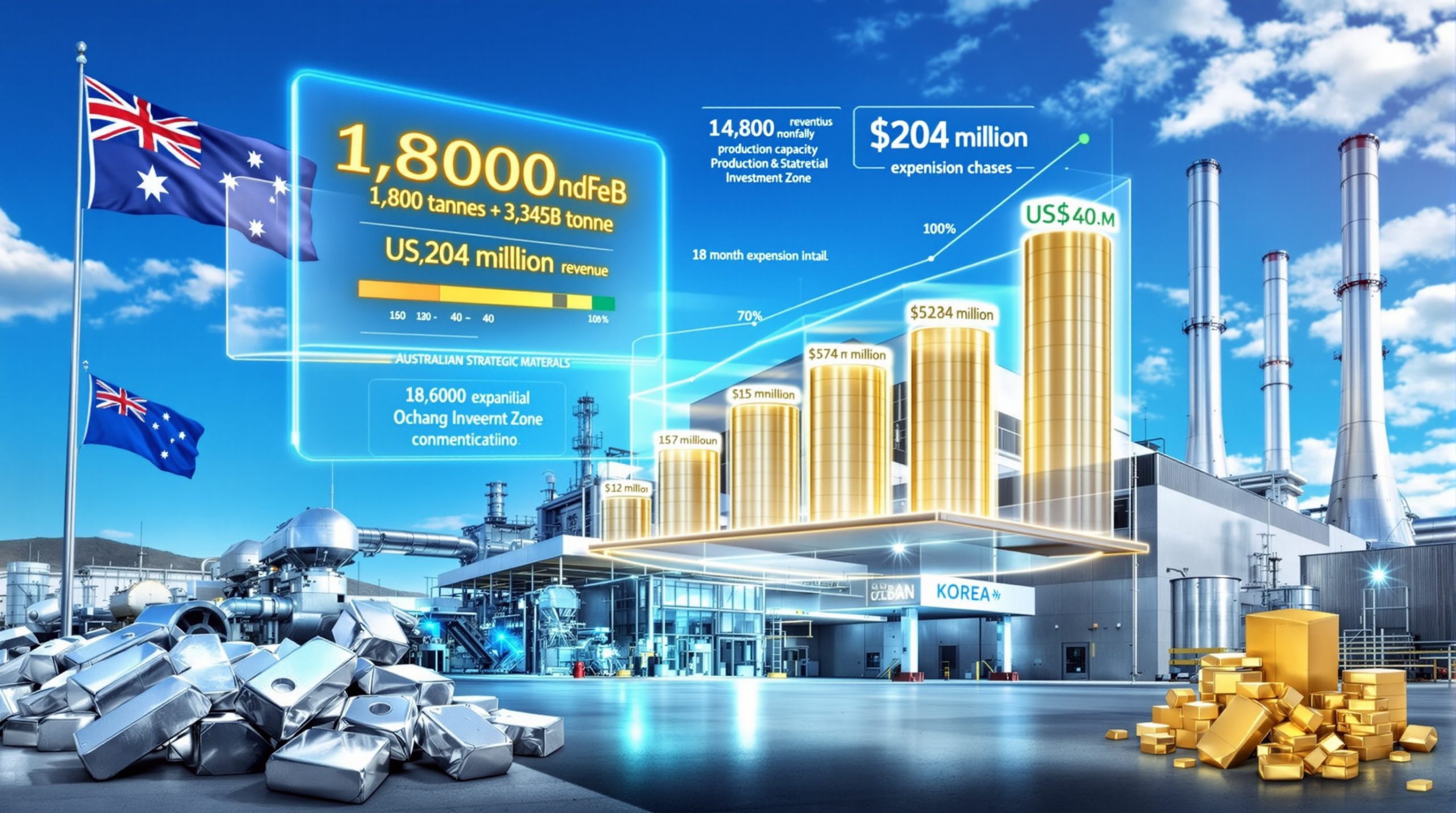How Are Current Iron Ore Prices Trending?
Recent Price Movements and Market Sentiment
Iron ore futures have been showing promising upward momentum in recent trading sessions. The January contract on China's Dalian Commodity Exchange closed 0.71% higher at 777 yuan ($108.63) per ton, according to the latest market data. Concurrently, the benchmark October contract on the Singapore Exchange rose 0.39% to $102.85 per ton. These positive price movements are particularly notable considering they occurred despite temporary production restrictions in key Chinese manufacturing regions.
The market has displayed resilience even as steelmakers in Tangshan, China's primary steel production hub, faced mandatory output restrictions. These measures were implemented to improve air quality during commemorative events, yet iron ore prices maintained their upward trajectory.
Goldman Sachs Revises Q4 Forecast
In a significant development for market outlook, Goldman Sachs recently adjusted its fourth-quarter iron ore price forecast upward from $90 to $95 per metric ton. This 5.5% increase signals cautious optimism about near-term market conditions from one of the world's leading investment banks. However, it's worth noting that Goldman Sachs maintained its longer-term forecast of $80 per ton by the end of 2026, indicating an expectation of gradual price normalization over the coming years.
This dual forecast suggests that while near-term factors may support prices at current levels, structural market dynamics point toward a moderating trend over time. The bank's analysis reflects the complex interplay of temporary supports and long-term fundamentals shaping the iron ore market.
Short-Term Supply Constraints
Current price levels have found support from production constraints in key industrial regions of China. In Tangshan, the country's largest steelmaking center, authorities implemented temporary output restrictions to ensure better air quality during important national commemorative events. Industry analysts anticipate a recovery in demand once these restrictions are lifted after September 4, potentially providing additional short-term price support.
Market participants are closely monitoring the situation, with analysts from First Futures noting that while prices have rebounded, actual ore demand has not yet shown convincing signs of improvement. This suggests potential downside risks remain despite the current price strength, highlighting the complex balance of factors influencing market sentiment.
What Factors Are Driving Iron Ore Price Forecasts?
Chinese Demand Outlook
China remains the dominant force in global iron ore markets, accounting for approximately 70% of global seaborne iron ore imports. However, structural shifts in the Chinese economy present significant challenges to long-term China demand trends.
Wood Mackenzie, a respected industry consultancy, projects that Chinese steel consumption will decline by 5-7 million tons annually over the next decade. This forecast reflects several fundamental changes:
- The ongoing property sector slowdown continues to dampen construction-related steel demand
- Demographic shifts and economic maturation are altering infrastructure development patterns
- Policy emphasis on sustainability and environmental protection impacts industrial output
- Transition from investment-led to consumption-driven economic growth
While manufacturing and infrastructure projects provide some counterbalance, they appear insufficient to maintain the historical growth rates that drove iron ore demand over the past two decades. This gradual erosion of the primary consumption driver represents a pivotal factor in long-term price forecasts.
Supply-Side Developments
Australian Production Expansion
Major producers in Australia's resource-rich Pilbara region continue maintaining robust output levels. BHP, Rio Tinto, and Fortescue Metals Group have all demonstrated strong production performance, with several expansion projects in various stages of development:
- Incremental capacity additions scheduled to come online between 2025-2027
- Technological improvements enhancing production efficiency and reducing operational costs
- Focus on higher-grade ore products to meet evolving market requirements
- Logistics optimization to maintain competitive delivered costs to key markets
These production developments collectively indicate a well-supplied market with significant flexibility to respond to changing demand conditions.
Simandou Project Impact
The massive Simandou iron ore project in Guinea represents a potential game-changer for global supply dynamics. When fully operational, this development is expected to:
- Produce up to 100 million tons of iron ore annually
- Supply high-grade ore with 65%+ Fe content, meeting growing demand for premium products
- Introduce phased production with initial output anticipated in late 2025/early 2026
- Reshape competitive dynamics among major producing regions
The project's significance extends beyond its substantial volume contribution. The high-quality nature of Simandou's resources positions it to serve premium market segments, potentially amplifying its impact on pricing for high-grade products.
Cost Curve Considerations
Production economics establish an effective price floor for iron ore, with different producers occupying distinct positions on the global cost curve:
- Major producers maintain cash costs in the $40-60 per ton range
- Mid-tier producers typically operate in the $55-70 per ton band
- Higher-cost producers in China and elsewhere require $70-80 per ton to remain viable
This cost structure suggests limited sustained downside below the $70-80 per ton level in the medium term, as prices below this threshold would trigger supply rationalization from higher-cost producers. However, temporary price excursions below these levels remain possible during periods of market dislocation.
What Are the Price Projections for 2025-2030?
Short-Term Forecast (2025-2026)
Iron ore prices are expected to moderate in 2025-2026 as market fundamentals adjust to evolving supply and demand conditions. Current analysis suggests the following trajectory:
| Period | Price Range (USD/ton) | Primary Drivers |
|---|---|---|
| Q1 2025 | $95-105 | Seasonal demand patterns, potential policy stimulus effects |
| Q2-Q3 2025 | $90-100 | Growing supply, moderating Chinese construction activity |
| Q4 2025-2026 | $85-95 | New supply capacity coming online, industrial transition impacts |
These projections incorporate both cyclical factors, such as seasonal demand patterns, and structural elements including new supply developments and changing consumption patterns in key markets.
Medium to Long-Term Outlook (2027-2030)
The consensus among market analysts points to a gradual decline in average iron ore prices through the latter part of the decade:
| Year | Projected Average (USD/ton) | Key Market Factors |
|---|---|---|
| 2027 | $85-90 | Supply growth outpacing demand, quality premiums widening |
| 2028 | $82-87 | Structural oversupply pressures, decarbonization impacts |
| 2029 | $80-85 | Demand adjustments, increased quality differentiation |
| 2030 | $78-83 | New market equilibrium, sustainable production economics |
These projections reflect the expected convergence of several long-term trends: moderating Chinese consumption, expanding global supply capacity, and the steel industry's technological evolution toward lower-carbon production methods.
Regional Price Variations
An increasingly important aspect of iron ore market dynamics involves the widening price differentials based on ore quality and geographic location:
- Premium for high-grade ore (65%+ Fe) likely to increase to $15-20 per ton over benchmark
- Discount for lower-grade ore (below 58% Fe) may expand to $25-30 per ton
- Regional pricing variations will increasingly reflect shifting trade patterns and transportation costs
- Specialized products serving specific steel applications may command additional premiums
These differentials highlight the market's evolution from a relatively homogeneous commodity toward a more segmented product landscape with distinct value propositions for different ore types.
How Will Market Dynamics Impact Iron Ore Prices?
Quality Premiums and Environmental Regulations
As steel producers face mounting pressure to reduce carbon emissions and environmental impacts, ore quality factors are gaining prominence in purchasing decisions:
- Demand for higher-grade iron ore (62%+ Fe content) continues to strengthen
- Low-impurity ores (particularly low phosphorus, silica, and alumina content) command greater premiums
- Producers of lower-grade material face structural challenges requiring beneficiation investment
- Environmental compliance costs increasingly influence producer economics and competitiveness
The market is witnessing a fundamental reassessment of value across different ore specifications, with environmental performance becoming a central consideration alongside traditional quality parameters.
Steel Industry Transformation
The global steel sector is undergoing significant technological and structural changes that directly affect iron ore consumption patterns:
- Increasing electric arc furnace (EAF) capacity reduces reliance on traditional blast furnace routes
- Green steel initiatives prioritizing hydrogen-based production methods are gaining momentum
- Recycled steel utilization rates continue rising globally, particularly in developed markets
- Smaller, more flexible production facilities increasingly replacing legacy integrated operations
These transformative shifts collectively reduce the intensity of iron ore consumption per ton of steel produced, creating an additional moderating influence on long-term demand projections.
Market Volatility Factors
Several elements could introduce significant price volatility despite the generally moderating long-term trend:
- Chinese economic policy shifts and potential stimulus measures
- Supply disruptions from weather events, operational challenges, or geopolitical developments
- Trade tensions and potential tariff adjustments affecting global steel and raw material flows
- Currency fluctuations, particularly the USD-CNY exchange rate, influencing purchasing power
These factors highlight the importance of robust scenario analysis when developing price forecasts, as short-term disruptive events can temporarily override structural trends.
What Are the Investment Implications of Iron Ore Price Trends?
Major Producer Strategies
Leading iron ore producers are actively adapting their strategic approaches to navigate the evolving market landscape:
- Increasing focus on operational efficiency and cost optimization across the value chain
- Prioritizing development of high-grade ore bodies and beneficiation capabilities
- Diversifying portfolios to include critical minerals and future-facing commodities
- Implementing carbon reduction initiatives to align with evolving customer requirements
These strategic pivots reflect recognition of the changing market dynamics and the need to maintain competitiveness in an increasingly complex operating environment.
Risk Assessment Framework
Investors evaluating iron ore exposure should consider several key factors within a comprehensive risk assessment framework:
- Price sensitivity analysis across different demand and supply scenarios
- Production cost positioning on the global cost curve relative to competitors
- Balance sheet strength and capital allocation priorities in a potentially challenging price environment
- Exposure to high-growth market segments and premium product categories
This multidimensional approach enables more sophisticated evaluation of investment opportunities beyond simple 2025 price forecast, incorporating operational and strategic considerations.
Emerging Opportunities
Despite the challenging overall outlook, several growth areas present potential investment opportunities:
- Direct reduced iron (DRI) grade material for green steel production pathways
- Specialized ore products engineered for specific steel applications and quality requirements
- Integrated mining and processing operations with lower carbon footprints
- Technology solutions for ore quality improvement and emissions reduction
These emerging segments highlight the market's evolution toward greater specialization and technological sophistication, creating potential value pools despite broader commoditization pressures.
How Will Regional Factors Influence the Iron Ore Market?
China's Economic Transition
China's ongoing economic rebalancing continues reshaping iron ore demand patterns in fundamental ways:
- Shift from property-led growth toward consumption and service sectors
- Infrastructure investment becoming more targeted and efficiency-focused
- Manufacturing emphasis moving toward higher-value products requiring specialized steel inputs
- Environmental policies increasingly influencing industrial production decisions and methods
These transitions represent a structural rather than cyclical shift, with profound implications for long-term iron ore demand projections and regional trade flows.
India's Growth Trajectory
India represents a potential bright spot for iron ore demand, with several factors supporting long-term growth potential:
- Steel consumption per capita remains well below developed market levels, indicating substantial growth headroom
- Ambitious infrastructure development plans support sustained steel demand growth
- Domestic iron ore production faces quality constraints and regulatory challenges
- Import requirements likely to increase gradually over the coming decade
While India's growth will not fully offset China's moderation, it represents an important counter-trend in global demand projections that warrants close attention from market participants.
Developed Market Dynamics
Traditional steel markets in developed economies face distinct challenges and opportunities:
- Demand increasingly driven by renovation and replacement rather than new construction
- Infrastructure renewal programs providing selective demand support in specific regions
- Manufacturing reshoring initiatives creating localized demand centers for specialized steel products
- Decarbonization investments driving capital expenditure in steel production facilities
These evolving dynamics influence not only overall volume requirements but also the specific quality characteristics and delivery patterns for iron ore in these markets.
What Are the Key Risks to Iron Ore Price Forecasts?
Downside Risks
Several factors could drive prices below baseline forecasts, presenting material risks to producers and investors:
- Deeper-than-expected Chinese property market correction impacting construction steel demand
- Accelerated transition to scrap-based steelmaking reducing primary iron requirements
- Faster-than-anticipated Simandou project ramp-up adding supply pressure
- Global economic recession impacting infrastructure spending and manufacturing output
These factors could potentially combine to create sustained downward pressure beyond the gradual moderation reflected in consensus forecasts.
Upside Potential
Conversely, several elements could support higher prices than currently anticipated:
- Significant Chinese economic stimulus measures boosting steel-intensive sectors
- Supply disruptions affecting major producers due to weather, technical, or geopolitical issues
- Slower-than-expected new project development due to financing or regulatory challenges
- Stronger-than-anticipated Indian steel sector growth creating additional demand centers
These potential upside catalysts highlight the importance of maintaining scenario flexibility in market analysis rather than relying on single-point forecasts.
Structural Uncertainties
Long-term forecasts face several fundamental uncertainties that could significantly alter market trajectories:
- Pace of steel industry decarbonization and adoption of alternative production technologies
- Technological breakthroughs in steelmaking processes affecting raw material requirements
- Policy shifts impacting industrial production, trade patterns, and environmental standards
- Climate-related impacts on mining operations, logistics networks, and production economics
These structural uncertainties underscore the need for adaptive strategy development that can respond to emerging trends rather than fixed long-term planning assumptions.
FAQ About Iron Ore Price Forecasts
What is the most significant factor influencing iron ore prices?
Chinese steel demand remains the dominant price driver, accounting for approximately 70% of seaborne iron ore consumption. Changes in Chinese construction activity, manufacturing output, and infrastructure development continue to exert outsized influence on global iron ore markets. Wood Mackenzie's projection of declining Chinese steel consumption (5-7 million tons annually over the next decade) represents a critical factor in long-term price forecasts.
How do production costs affect iron ore pricing?
Production costs establish an effective price floor in the market. Major producers maintain break-even points ranging from $40-60 per ton, while higher-cost producers require $70-80 per ton to remain viable. This cost structure suggests limited sustained downside below these levels, as prices below production costs typically trigger supply rationalization that eventually stabilizes the market.
Will new supply sources significantly impact prices?
Yes, particularly the Simandou project in Guinea, which represents a transformative addition to global supply. When fully operational, this development could add up to 100 million tons of high-grade ore annually to the market. This substantial volume increase, combined with expansion plans from existing producers, will likely create surplus impact on prices in the medium term as supply growth outpaces demand.
How might green steel initiatives affect iron ore demand?
The transition toward lower-carbon steelmaking methods will reshape iron ore requirements in significant ways. While potentially reducing overall blast furnace demand, this transition will increase requirements for higher-grade, lower-impurity ores that enable more efficient and cleaner production processes. This evolution may create a two-tier market with substantial premiums for higher-quality products that support reduced emissions intensity.
The Future of Iron Ore Prices
The iron ore market appears positioned for a gradual transition from current price levels toward a more sustainable long-term equilibrium. While near-term prices benefit from temporary production restrictions and potential demand recovery, structural factors point toward moderation over the coming years.
The consensus outlook suggests prices will trend toward the $80-85 per ton range by mid-decade, with further gradual declines toward $75-80 by 2030 as supply growth outpaces demand. However, this baseline scenario faces numerous potential disruptions from economic, technological, and policy developments that could alter the trajectory significantly.
For market participants, the key challenge lies in navigating this transition period while positioning for a market increasingly differentiated by product quality, production sustainability, and integration with evolving steel industry requirements. Strategic flexibility and scenario planning will prove essential in this environment characterized by both structural shifts and periodic volatility.
The miner demand insights reflect broader trends in global commodity markets, where environmental considerations, technological change, and shifting consumption patterns are creating more complex and segmented landscapes. Success will increasingly depend on specialization, cost efficiency, and alignment with emerging value drivers rather than simply maximizing production volume.
According to the MarketIndex analysis, production from the largest iron ore mines will continue to shape market dynamics, with significant implications for pricing power and competitive positioning among key industry players.
Disclaimer: This analysis represents current market understanding based on available information. Market conditions are subject to change, and commodity prices can be volatile and unpredictable. Readers should conduct their own research and consult financial advisors before making investment decisions based on iron ore price forecasts.
Ready to Stay Ahead of the Next Major Resource Discovery?
Discover how ASX mineral discoveries can deliver substantial returns by exploring Discovery Alert's dedicated discoveries page, where their proprietary Discovery IQ model turns complex mining announcements into actionable investment opportunities for traders and long-term investors alike.




